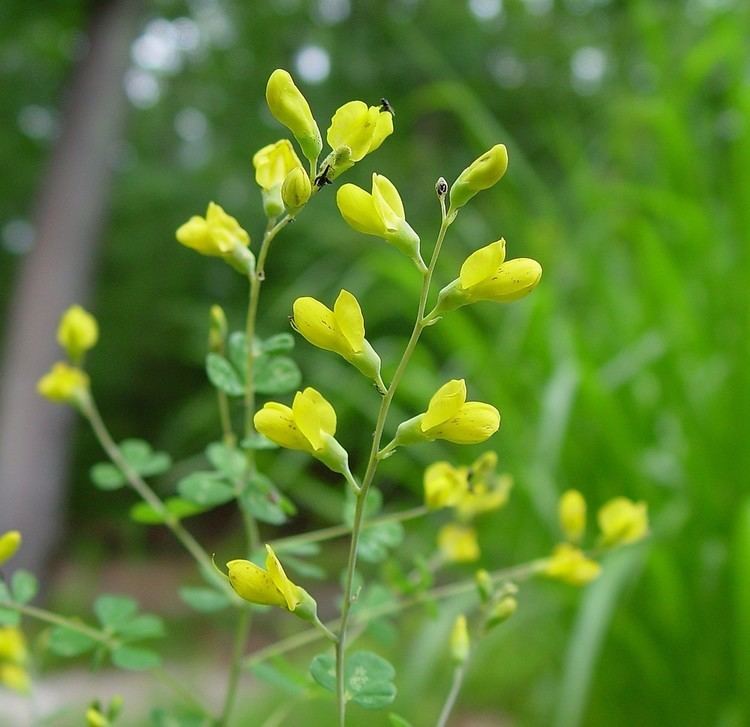Rank Species | Genus Baptisia Higher classification Baptisia | |
 | ||
Similar Baptisia, Baptisia australis, Legumes, Baptisia alba, Erynnis baptisiae | ||
Baptisia tinctoria homeopathic medicine
Baptisia tinctoria (common names include yellow false indigo, wild indigo, wild-indigo and horseflyweed) is a herbaceous perennial plant in the family Fabaceae. It is native to eastern North America.
Contents
Baptisia tinctoria
Distribution
Baptisia tinctoria is found throughout the eastern United States, west to Minnesota, and south to Florida. As it is rare in some parts of its range, it is protected by some state authorities: in Kentucky it is threatened; in Maine it is considered endangered. It prefers dry meadow and open woodland environments.
Description

The multiple bushy stems of Baptisia tinctoria reach 2 to 3 feet tall. The leaves are silver-green; each is divided into three leaflets about ½ inch long. The flowers are yellow and grow in spikes 1½ to 3 inches long.
The leaves are eaten by some lepidopteran caterpillars, for example the Io moth (Automeris io).
On Martha's Vineyard, the species is a tumbleweed: it grows in a globular form, breaks off at the root in the autumn, and tumbles about.
